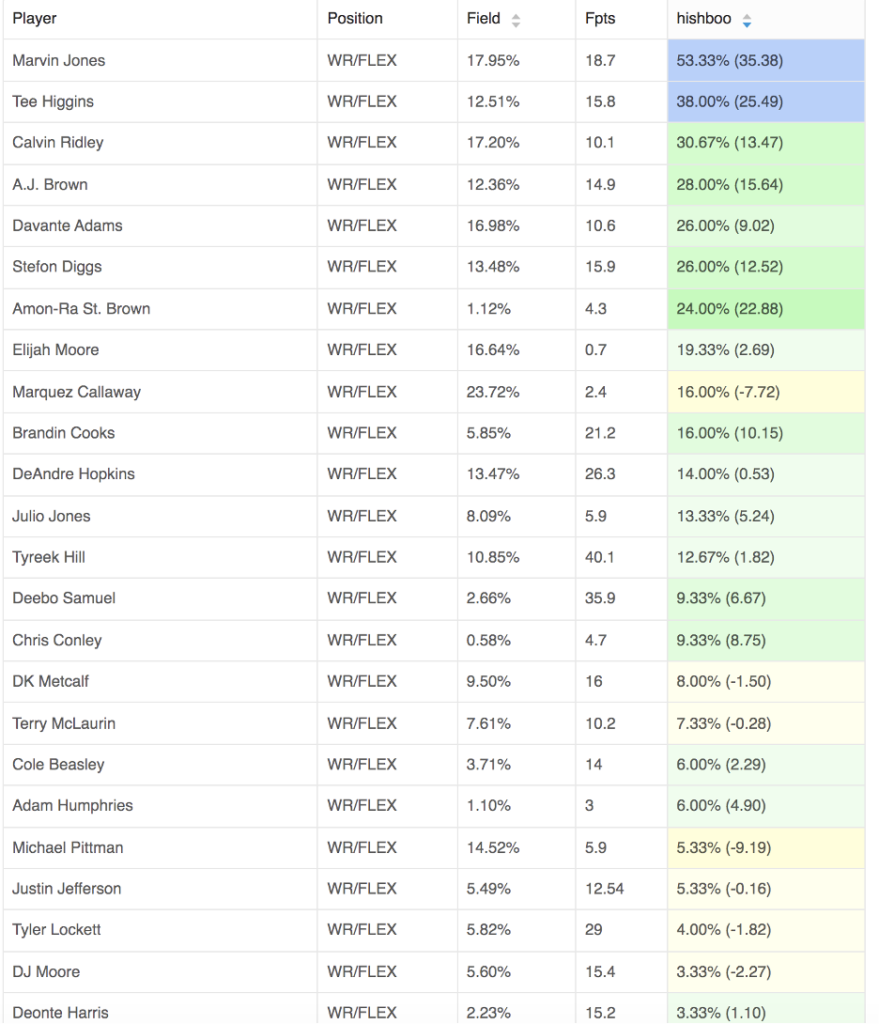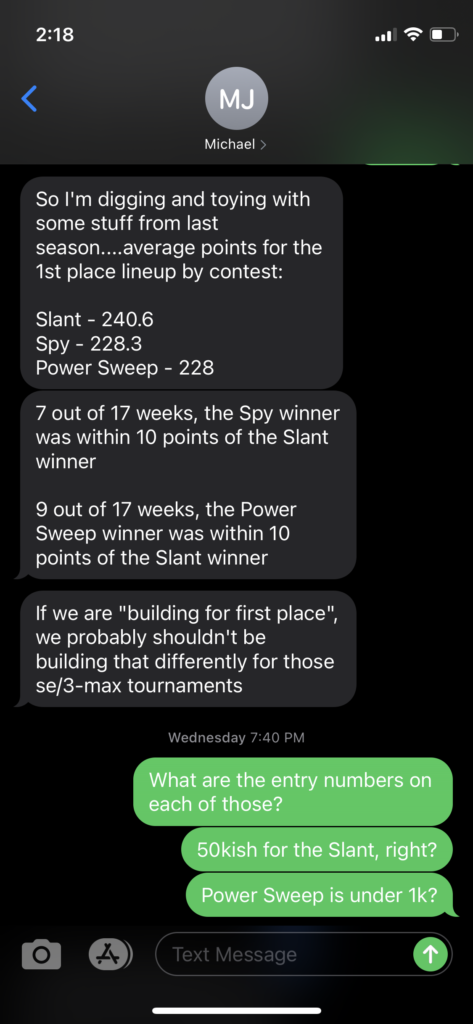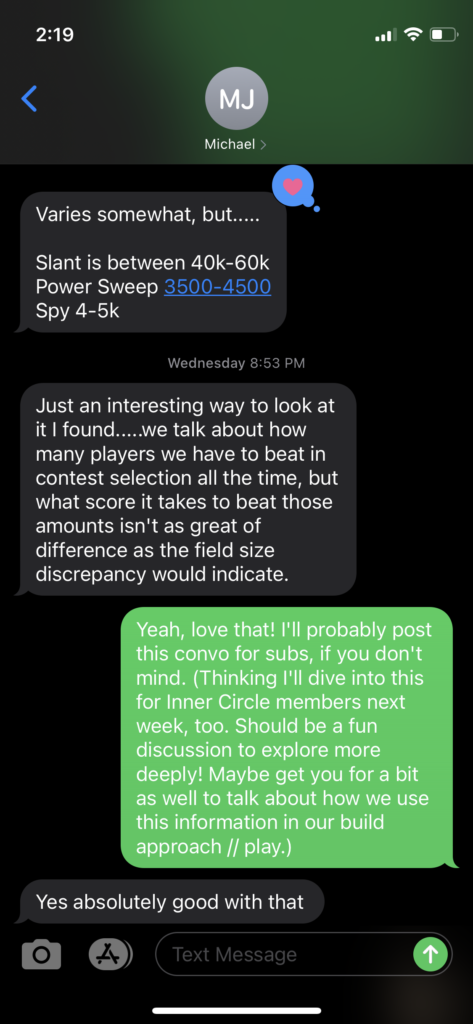Published Monday Morning
Why does Vegas set lines? What is their goal? Well, Vegas sets lines in an attempt to get exactly half of the action on each side of every line they post. In this case, they take the rake, guarantee a profit, and move on. So, does that mean Vegas lines are perfectly set? Furthermore, does it mean they are always perfectly set early in the week? No! Every week this season (starting Week 2), we’ll be jumping into early-week betting line inefficiencies to take advantage of before they move. This line movement can be caused by a number of factors, but the primary reasons for movements after initial line release are public sentiment and recency biases (shark money typically doesn’t come in until later in the week, when bettors have more complete information). With that, let’s jump in!
+EV LINES:
NYG @ WFT U 42.5:
We should be well aware by now the struggles of the Giants’ offensive line (covered in-depth in the offseason primer). The Giants surrendered the league’s sixth highest adjusted sack rate in 2020, didn’t address their offensive line woes until after 53-man cuts this offseason, and just surrendered two sacks to the equally potent defensive line of the Broncos. Why are sacks and offensive/defensive line mismatches so important to an under, you ask? Sacks obviously disrupt drives, but the larger point here is what pressure in the backfield does to Giants’ quarterback Daniel Jones. Jones’ passer rating when under pressure over the previous two season sits at a lowly 73.3. WFT forced pressure at the eighth highest rate in 2020 and are healthy along the defensive line. On the other side of the ball, Ryan Fitzpatrick was forced from Week 1 with what is being called a hip subluxation, which is a partially dislodged/dislocated joint and socket issue in the hip. Repeated force on the injury can lead to a full dislocation, which typically brings a two-to-three-month recovery window in athletes; it is highly unlikely Fitzmagic plays in Week 2. This means Washington will be starting backup quarterback Taylor Heinicke for their Week 2 game against the Giants. Oh, and both teams are on a short week with this game playing on Thursday night. We should see this line move 1.5 to 2.0 points lower before Thursday’s first kick, making it a sharp early week bet. Scoop up that expected value before the line moves!
BUF -3.5:
Buffalo is coming off a brutal loss to the Steelers, a game that saw them lead for the better part of three quarters. Miami’s defense relies on heavy 3-4 amorphous cover-0 and cover-1 defensive alignments. Put more simply, they run sub-packages almost 75% of the time with heavy man-coverage elements. Although their secondary is one of the top three in the league, man coverage on Stefon Diggs, Emmanuel Sanders, and Cole Beasley is a tough ask. Diggs is one of the purest route runners in the league, Sanders, even at the age of 34, has created a top five separation value within the first five yards of the line of scrimmage over the previous three seasons (his burst and route acumen create separation in close), and Beasley carries a high football IQ capable of settling behind linebacker coverage and underneath safety help. Coming off a loss on opening weekend, I expect Bills offensive coordinator Brian Daboll to view this as a statement game, with likely 35-40 pass attempts dialed up for quarterback Josh Allen. As for the Dolphins, due to their offensive line woes, I expect them to look to attack this game through the air, which should mean this game turns into a pass-off. Of note, this line is currently set at one of the “magic numbers” in wagering (3.5), meaning it is highly unlikely we see the line move in favor of the Dolphins as the week progresses. In other words, the line is either going to remain the same or move in favor of the Bills as we get further into the week. This is a situation where there is a positive correlation to expected value early on.
PIT -6.5:
Another line currently set at a “magic number” in wagering (6.5). The expected value in this one comes from the fact that the Raiders have yet to play their Week 1 game (play on MNF). The line for the Week 1 BAL @ LV game currently resides at 3.5 (yup, another magic number) primarily due to the injuries at corner and running back that the Ravens have experienced this offseason. But what happens if the Ravens come out and win by a touchdown or more on Monday night? You guessed it, the line for the Raiders’ Week 2 matchup will move. It takes a good bit of action to move a line past one of the magic numbers, but I’m currently all over BAL -3.5 for Week 1 and I expect the outcome of that game to move this Week 2 line to PIT -7.5 early Tuesday morning. Take the expected value now before that happens.
HONORABLE MENTIONS::
SF -3.0 / NO -3.0 / KC -2.5: All three of these lines for Week 2 fall just below one of the “magic numbers,” meaning it wouldn’t take much action to move each to -3.5. The matchups are almost irrelevant; as in, if we took every favorite residing at an early week line of 2.5-3.0 over the course of the season, we would come out on top as far as expected value goes when all is said and done. Majority of the time, these early week lines find themselves moving to the “magic number.” Book the half point or full point and move on.












